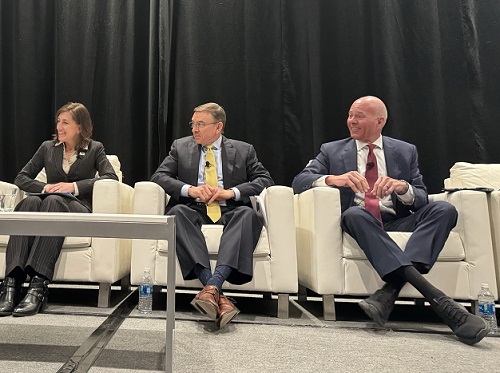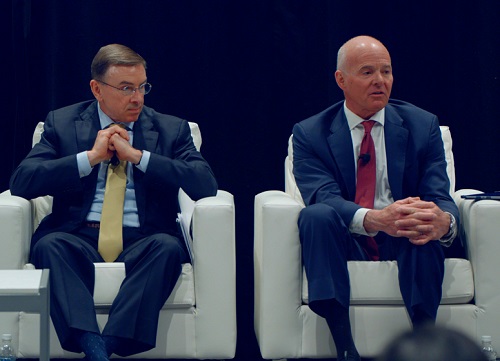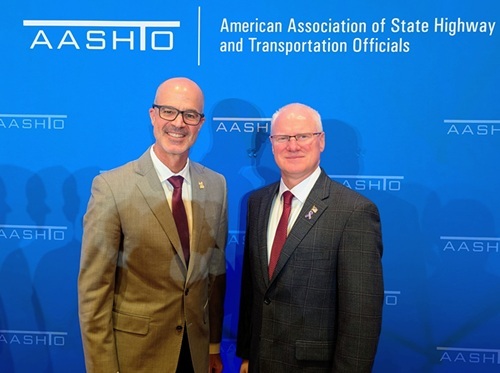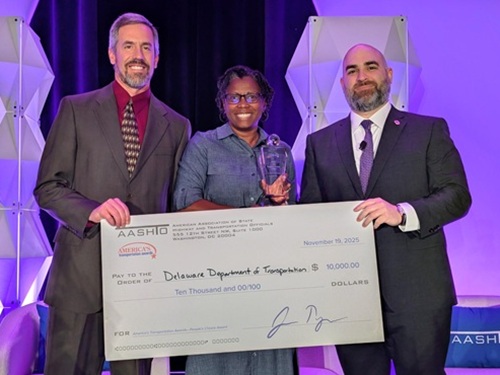The American Association of State Highway and Transportation Officials recently hosted a knowledge session at its 2024 Washington Briefing delving into the funding challenges faced by the transportation sector as well as some of the solutions to those issues.
[Above photo by AASHTO]
Jeff Cleland, senior manager of state transportation public policy for Amazon, moderated that session, which addressed everything from the future of the Highway Trust Fund or HTF to how inflation and other economic trends exacerbate fiscal planning efforts for state departments of transportation.

“We have to emphasize that stable and reliable transportation funding is very important – especially for transit programs,” noted Nancy Daubenberger, commissioner of the Minnesota Department of Transportation. “Having the certainty of the HTF year-to-year is important for states to plan their transportation expenditures. The HTF is so very important – it has not outlived its purpose, for there will continue to be demands on federal funding. So we need to reinforce the importance of predictability in [federal] funding for our programs.”
However, Carlos Braceras – executive director of the Utah Department of Transportation – stressed that the HTF alone is no longer sufficient to meet all of the nation’s transportation funding needs, so other options need to be examined.
“We need to continue to have the HTF – it will continue to be the backbone, the foundational element, funding our transportation system. There has to be a paying connection between the transportation systems and its users – that helps regulate the use of the system based on cost,” he said.

“But the idea that our transportation system today can be completely funded by fuel tax revenues is not a hill we can climb; fuel prices fluctuate too much. We will not be able to sustain the infrastructure that we have or eventually need based on fuel taxes alone,” Braceras said. “So we need to recognize the nexus between general revenue funds and how they are tied to transportation. That nexus will help us build up the money we need for transportation.”
Part of the “nexus” is recognizing that transportation remains a “foundation piece” for both the nation’s economy and the quality of life for its residents, he added.
“We have to continue to send the message and explain how the goods we use and where travel for school or work all rely on this transportation system; the one we only seem to notice when things go bad, not when it works well,” Braceras pointed out. “It’s all about communicating value of transportation to communities we live in, because the money always follows the ‘why’ every single time.”

Dave Bauer, president & CEO of the American Road & Transportation Builders Association, added that it is “incredibly important” to initiate a conversation about the health and future of the HTF as itis key to “reinforcing the shared partnership” needed for addressing transportation system needs.
“The crux of the conversation is about the future of the federal program and why the HTF exists,” he said. “And why it exists is to generate resources to upgrade nation’s transportation system. We have to articulate the importance of marrying revenues to benefits, as too often we talk about taxes without talking about what we get for them.”
Focusing more on the outcomes from fuel tax funding is what will help state DOTs build more support for transportation projects, Bauer noted. “It is part of the construct for contract authority that allows states to manage multi-year contracts that extend beyond the current fiscal year; the contract authority that provides to the private sector the certainty of payments look like,” he said. “That is why delay and uncertainty are destructive to the transportation funding process.”
 Top Stories
Top Stories
New AASHTO Leadership Elected at 2025 Annual Meeting
November 21, 2025 Top Stories
Top Stories

